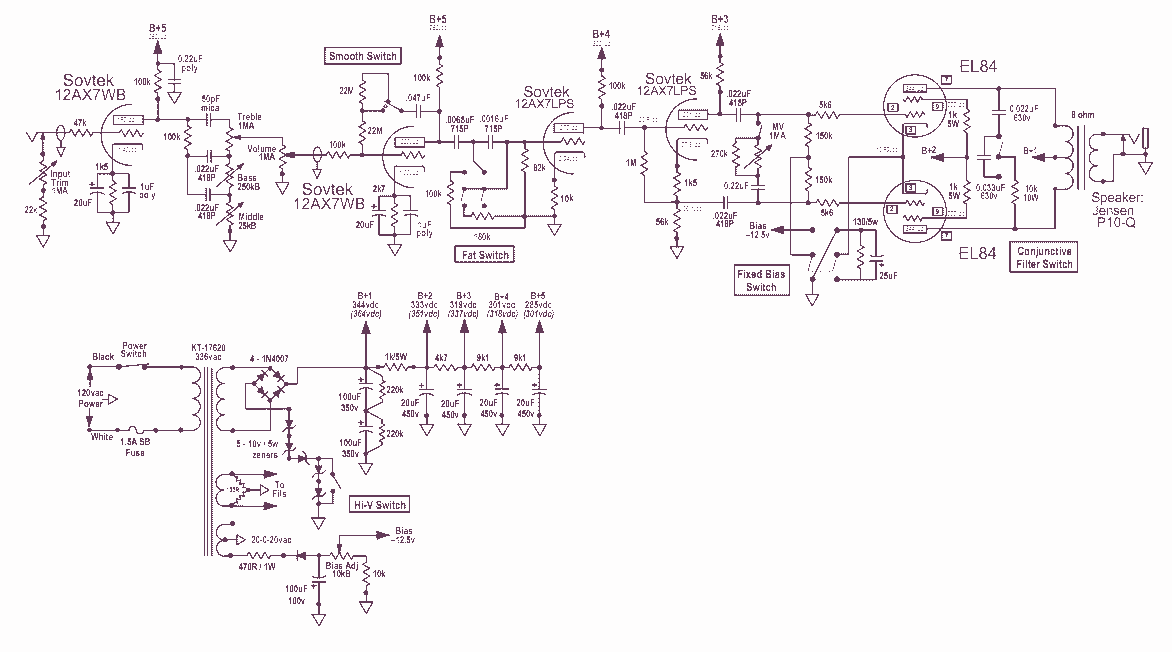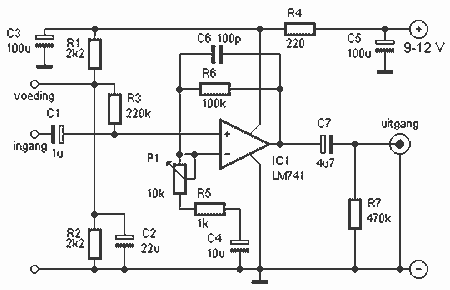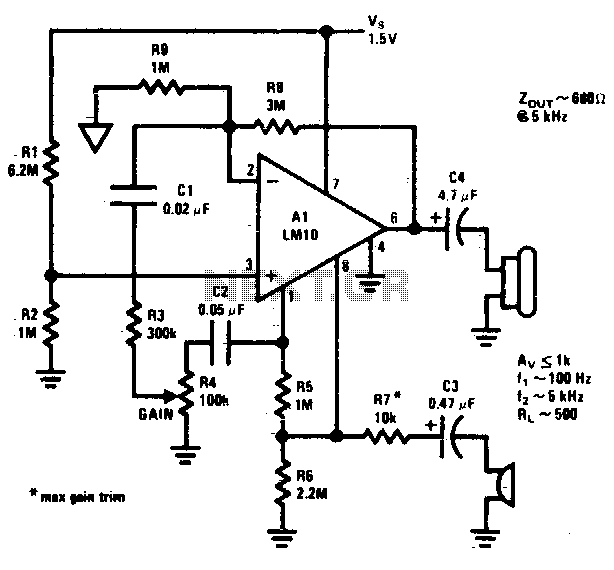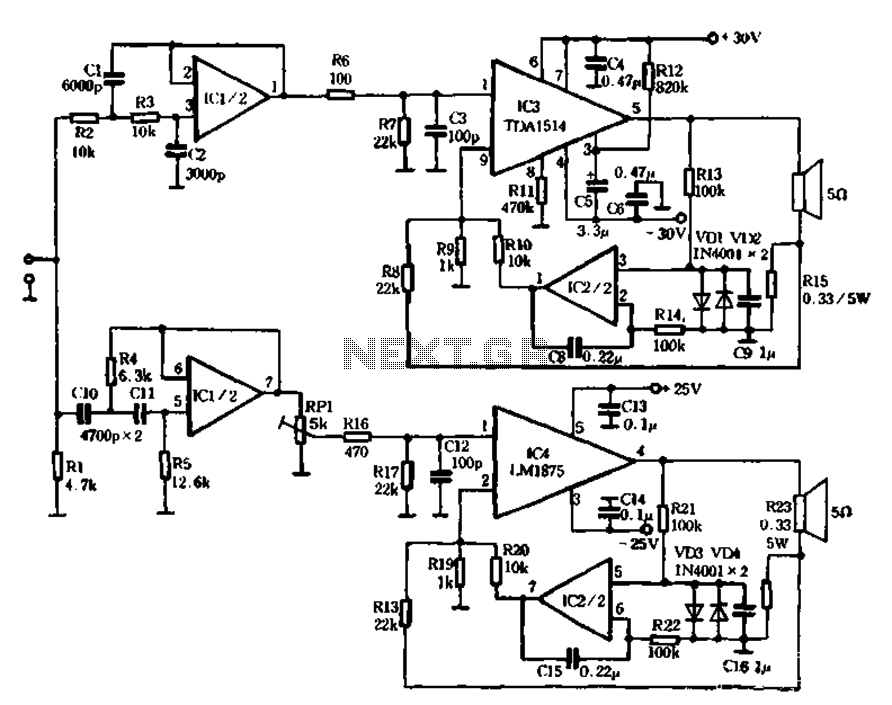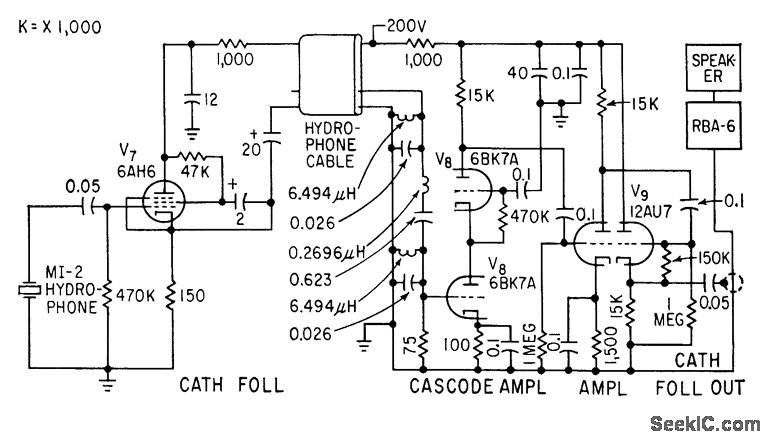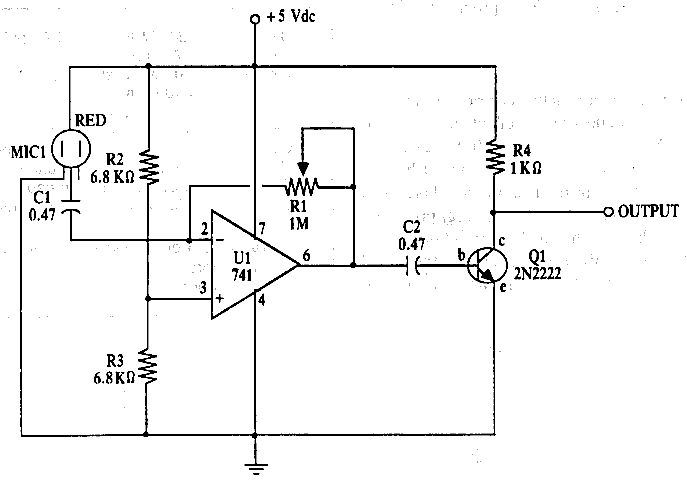
amplifier 1
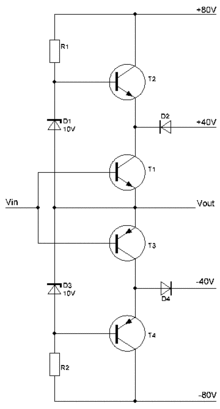
A power amplifier is an amplifier designed to deliver maximum power output to a load. For example, in an audio system, it is the component responsible for driving speakers.
A power amplifier is a critical component in various electronic systems, particularly in audio applications where it enhances the signal strength to drive speakers effectively. The primary function of a power amplifier is to increase the amplitude of a low-level input signal, allowing it to produce a higher output that can drive a load, such as a speaker or motor.
Power amplifiers can be classified into several classes based on their operation and efficiency. Common classes include Class A, Class B, Class AB, and Class D. Each class has distinct characteristics regarding linearity, efficiency, and thermal management.
- **Class A amplifiers** are known for their high linearity and low distortion but are typically less efficient, generating significant heat due to continuous operation.
- **Class B amplifiers** offer improved efficiency by conducting current only during half of the input signal cycle but may introduce crossover distortion.
- **Class AB amplifiers** combine characteristics of both Class A and Class B, providing a balance between linearity and efficiency, making them popular in audio applications.
- **Class D amplifiers**, also known as switching amplifiers, utilize pulse-width modulation to achieve high efficiency, making them suitable for portable and battery-operated devices.
Power amplifiers are also characterized by their output power rating, which indicates the maximum power they can deliver to a load without distortion or damage. This rating is crucial for matching the amplifier to the speakers or other load devices to ensure optimal performance.
In addition to the basic amplification function, power amplifiers may include features such as feedback mechanisms for improved stability, protection circuits to prevent damage from overcurrent or overheating, and various input and output configurations to accommodate different applications.
Overall, a power amplifier plays a vital role in ensuring that audio signals are delivered with sufficient power to drive speakers effectively, thereby enhancing the overall audio experience in various electronic systems.power amplifier An amplifier designed to deliver maximum power output to a load. Example: In an audio system, it is the .. 🔗 External reference
A power amplifier is a critical component in various electronic systems, particularly in audio applications where it enhances the signal strength to drive speakers effectively. The primary function of a power amplifier is to increase the amplitude of a low-level input signal, allowing it to produce a higher output that can drive a load, such as a speaker or motor.
Power amplifiers can be classified into several classes based on their operation and efficiency. Common classes include Class A, Class B, Class AB, and Class D. Each class has distinct characteristics regarding linearity, efficiency, and thermal management.
- **Class A amplifiers** are known for their high linearity and low distortion but are typically less efficient, generating significant heat due to continuous operation.
- **Class B amplifiers** offer improved efficiency by conducting current only during half of the input signal cycle but may introduce crossover distortion.
- **Class AB amplifiers** combine characteristics of both Class A and Class B, providing a balance between linearity and efficiency, making them popular in audio applications.
- **Class D amplifiers**, also known as switching amplifiers, utilize pulse-width modulation to achieve high efficiency, making them suitable for portable and battery-operated devices.
Power amplifiers are also characterized by their output power rating, which indicates the maximum power they can deliver to a load without distortion or damage. This rating is crucial for matching the amplifier to the speakers or other load devices to ensure optimal performance.
In addition to the basic amplification function, power amplifiers may include features such as feedback mechanisms for improved stability, protection circuits to prevent damage from overcurrent or overheating, and various input and output configurations to accommodate different applications.
Overall, a power amplifier plays a vital role in ensuring that audio signals are delivered with sufficient power to drive speakers effectively, thereby enhancing the overall audio experience in various electronic systems.power amplifier An amplifier designed to deliver maximum power output to a load. Example: In an audio system, it is the .. 🔗 External reference
